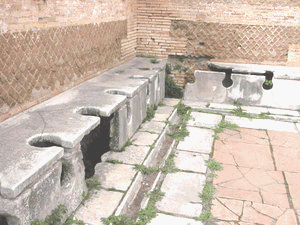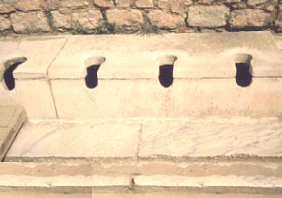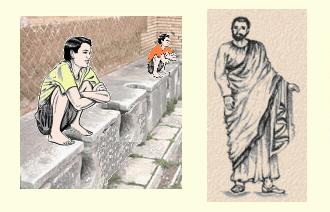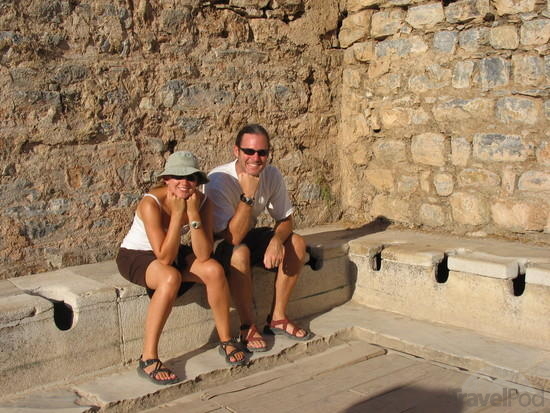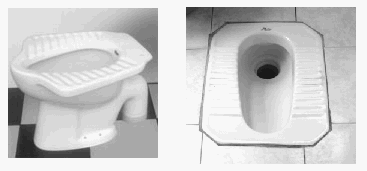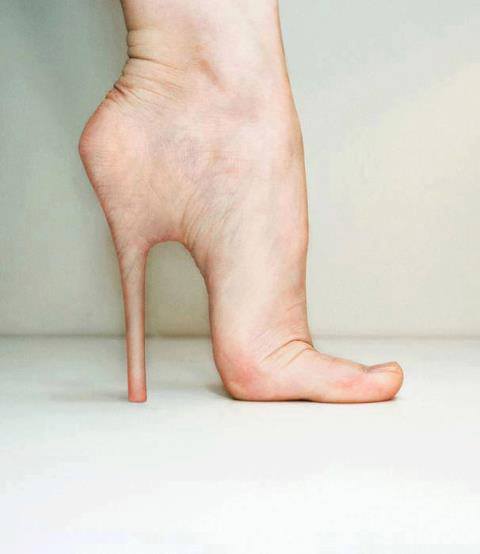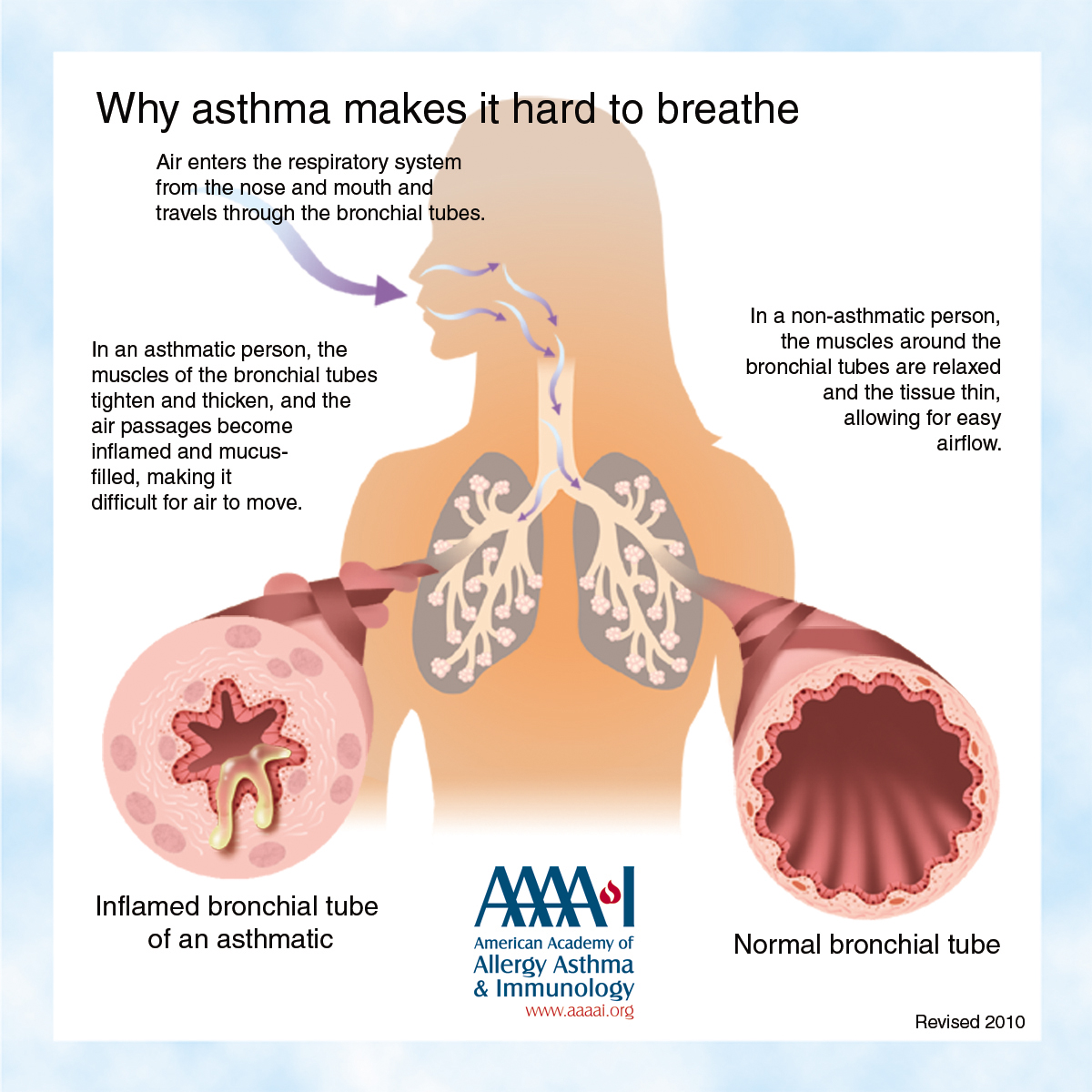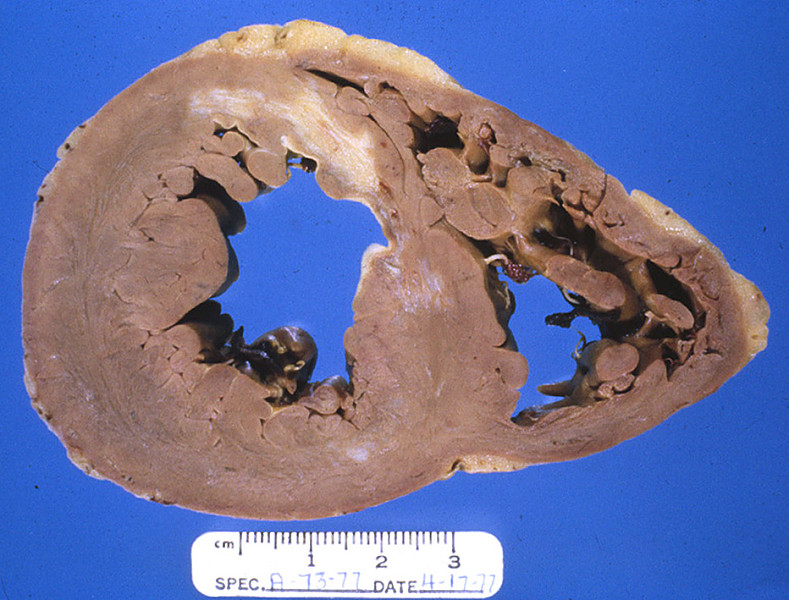Skizofrenia adalah sindrom di mana minda kita memainkan sesuatu yg tidak nyata dan tidak wujud.
penghidap skizofrenia seringkali menyatakan mereka nampak, rasa atau mendengar sesuatu. namun ianya hanya mainan fikiran semata-mata. Ini terbukti pabila orang lain tidak dapat melihat atau mendengarnya.
Mungkin sukar untuk dibezakan dengan gangguan makhluk2 halus kan. ya, memang sukar. namun penyakit ini boleh dikenal pasti dengan beberapa simptom dan pattern yg berkenaan.
Secara ringkas pengidap akan mengalami 'positive symptoms' ataupun 'negative symptoms' pada masa2 tertentu. positif termasuklah; halusinasi, delusi. manakala negatif antaranya; mula mengasingkan diri, tidak berminat lagi dengan hobi, mimik muka yg terhad.
Gejala positif adalah simptom yang individu normal tidak mengalami tetapi hadir pada penghidap skizofrenia. Biasanya simptom ini dianggap sebagai manifestasi psikosis. Positive symptoms umumnya mempunyai respon yang baik kepada ubat.
Gejala negatif adalah suatu defisit tindak balas emosi atau proses pemikiran lain, dan ini kurang memberi respons kepada ubat. Gejala negatif menyumbang kepada rendahnya kualiti hidup, keupayaan berfungsi, dan beban kepada orang lain berbanding dengan manifestasi gejala yang positif. Orang dengan gejala negatif yang sangat teruk sering mempunyai sejarah poor adjustment sebelum bermulanya penyakit. Tindak balas kepada ubat sering terhad
Di sini adalah maksud istilah2 yg berkaitan;
halusinasi: persepsi deria yg wujud tanpa kehadiran stimulus/objek sebenar. boleh hadir dalam bentuk deria lihat, dengar dan rasa.
delusi: kepercayaan pemikiran yg sangat kuat berkenaan sesuatu yakni jauh dari amalan agama atau adat seseorang. boleh hadir dalam pelbagai bentuk, contoh yg sering berlaku ialah delusi jenis 'persecutary': seseorang yg percaya bahawa ada orang/sesuatu ingin mencederakan atau berbuat kejahatan terhadapnya dimana jika ditanya kn mengapa, alasan nya tidak logik dan tidak kena mengena langsung dengan agama dan adat individu tersebut.
psikosis: ialah simptom yg bermaksud seseorang itu tidak dapat membezakan mana yg reality dan mana yg tidak. ini termasklah kedua2 halusinasi dan delusi. psikosis adalah manifestasi simptom, dan ia bukan lah suatu tarif diagnosis (penyakit) .
Disini ada satu petikan dari pengidap skizofrenia yg telah pulih..
""Saya dibesarkan di sebuah keluarga yang normal, dan saya adalah seorang anak cerdas dengan IQ- 140, seorang mahasiswa yang selalu dapat nilai A. Tapi ketika masih kuliah, konsentrasi saya mulai menghilang.Saya mulai mendengar suara-suara yang mengatakan bahwa saya bukan siapa-siapa, bahwa saya tidak akan pernah berhasil dalam hidup. Nilai saya turun dari A ke C.
Pada tahun 1977, saya dirawat di rumah sakit karena skizofrenia. Saya diberi terapi electroconvulsive (ECT), sejumlah besar obat. Suara-suara itu berhenti sementara, tetapi mereka tidak pergi untuk selamanya. Setelah dirawat di rumah sakit, saya mencoba untuk mencari pekerjaan dan bekerja mandiri. Tapi saya tidak bisa melakukannya. Suara-suara tersebut menakutkan dan sangat mengganggu. Akhirnya saya pindah dan hidup dengan ibu saya, dan segera setelah itu, dikirim ke rumah sakit lain di Jacksonville, Florida, Amerika Serikat.
Saya keluar masuk rumah sakit dan mendapat pengobatan rawat jalan untuk sementara waktu, karena suara-suara tersebut datang dan pergi. Kadang-kadang saya merasa kondisi begitu baik sehingga saya menyangkal kalau saya punya penyakit sampai gejala tersebut kembali kambuh. Saya merasa sangat lelah dan bosan dengan pengobatan pada saat itu, saya merasa ada stigma terhadap saya dari ibu saya sendiri dan bahkan psikiater saya. Ibu saya bilang kalau saya akan disingkirkan atau dibuang selama sisa hidup saya, dan dia percaya bahwa tidak seorangpun dengan penyakit mental seperti skizofrenia bisa sembuh.
Saya tidak tahan dengan cap (stigma) seperti itu , jadi aku pindah. Rencana saya adalah untuk mencari pekerjaan, tapi akhirnya saya jadi tunawisma di jalanan di Florida. Saya tidak punya makanan, obat-obatan, dan pekerjaan yang bisa membuat saya hidup mandiri. Untuk sementara, saya tinggal di garasi seseorang, dan sebagai imbalannya , saya harus melakukan segala macam pekerjaan. Ketika gejala penyakit saya menjadi lebih parah, saya dibawa ke unit gawat darurat.
Di sinilah cerita saya mulai berbalik. Untuk pertama kalinya dalam hidup saya, saya terhubung dengan seorang pekerja sosial yang membantu saya mendapatkan perawatan, Jaminan Sosial, pakaian, makanan, dan tempat tinggal. Ketidak pastian dan kekhawatiran saya tentang hidup sendiri mulai pergi, dan saya merasa termotivasi. Ini adalah awal dari pemulihan saya.
Saya mendapat obat-obatan yang lebih baru dan lebih efektif, dan obat yang disebut Respidol akhirnya membuat suara-suara menghilang untuk selamanya. Saya bisa hidup sendiri di sebuah apartemen biasa untuk pertama kalinya. Saya belajar keterampilan dasar mengatasi masalah (halusinasi, dll) dari petugas kesehatan (manajer kasus) dan teman-teman serta dari kelompok pendukung yang memiliki pengalaman dalam sistem kesehatan mental. Mereka mengajari saya bagaimana untuk melakukan advokasi untuk diri saya sendiri. Bantuan mereka sangat penting dalam proses pemulihan saya, itu membuat saya ingin memberi sesuatu kepada orang lain yang membutuhkan. Saya mulai menceritakan kisah saya sendiri kepada konsumen (penderita gangguan jiwa lain). Hebatnya, saya menemukan bahwa melakukan hal ini tidak hanya membuat orang lain terinspirasi tetapi membantu pemulihan saya sendiri. Perlahan lahan saya semakin kuat dan pulih kembali.
Setelah 20 tahun, akhirnya saya kembali ke perguruan tinggi. Ada petugas kesehatan (manajer kasus) yang meragukan saya, yang mengatakan saya tidak boleh mengajukan pinjaman (hutang) untuk mahasiswa karena saya tidak mungkin bisa mendapatkan nilai yang diperlukan. Tapi di tahun 1990-an, saya mendapat gelar sarjana saya dan selanjutnya master dalam pekerjaan sosial dan konsisten mendapat nilai A. Pada titik ini saya benar-benar independen. Saya melepaskan Jaminan Sosial, Medicare dan Medicaid , serta melepaskan perumahan bersubsidi. Saya sekarang memiliki sebuah kondominium melalui program sewa-untuk-saya sendiri, dan di sanalah saya tinggal-dengan istri saya. Saya lupa menyebutkan saya menikah?
Sekarang, saya koordinator Kantor Urusan Konsumen di Florida, kantor didanai oleh Departemen Anak dan Keluarga. Menurut saya hal yang paling penting untuk pemulihan adalah adanya harapan, kekuatan dan kemampuan dari diri saya sendiri yang bisa membuat pemulihan menjadi suatu kenyataan. Bukan hanya obat-obatan, tidak hanya terapi, bukan hanya stabilitas keuangan, dll . Semua hal tersebut penting dalam proses pemulihan. Namun pemulihan itu hal yang pribadi sifatnya, berbeda antara satu dengan lainnya. Tidak ada yang dapat memberitahu Anda bagaimana untuk melakukan pemulihan tersebut. Hal yang penting untuk diketahui adalah bahwa Anda bisa pulih. Anda memiliki kekuatan dan kemampuan untuk membuat pemulihan menjadi suatu kenyataan. ""




